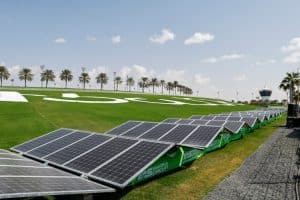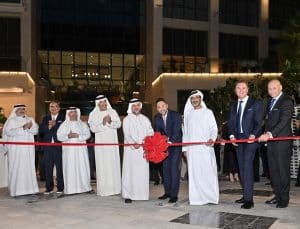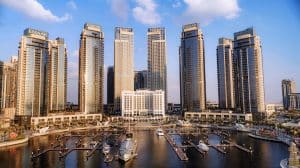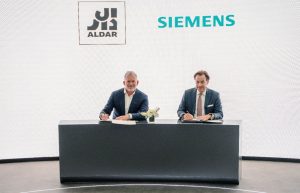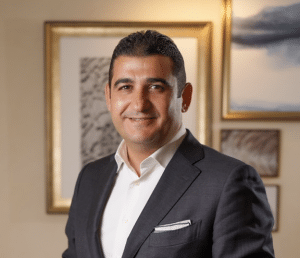
Growth momentum in Saudi Arabia’s non-oil private sector regained strength in February, as improvements in business confidence and customer demand led to faster expansions in output, new business and purchasing. Cost inflationary pressures meanwhile eased for the second month running, while expectations for future output climbed to their highest since the start of 2021.
The headline seasonally adjusted IHS Markit Saudi Arabia Purchasing Managers’ Index (PMI) rose three points from 53.2 in January to 56.2 in February, marking the first uplift in the index since last September.
The latest reading signalled a strong improvement in operating conditions that was the fastest recorded for three months. Underlying data showed that the improvement was driven by a surge in new business growth, after concerns about the Omicron variant led to a slowdown at the beginning of the year.
The acceleration in growth was notably the first recorded for five months. The rebound in sales was often linked to rising customer demand and falling COVID-19 case numbers, while some panellists cited increased marketing efforts and competitive pricing strategies.In contrast to the overall sales trend, new export orders decreased for the second month running. Panellists reported facing greater competition in external markets, while the Omicron wave continued to stem demand in some places.
Commenting on the latest survey results, David Owen, Economist at IHS Markit, said: “The latest PMI figures confirmed that the impact of the Omicron wave on the non-oil economy was only mild. Following two months of relatively soft (but still positive) growth, momentum rebounded strongly in February as cases began to fall. Overall sales picked up at the quickest rate since last November, despite a further slight fall in export demand, while activity growth moved closer to the peak levels seen towards the end of last year.”
Signs of improving market conditions meant that business optimism was at its highest since January 2021, as firms expect demand growth to remain robust and the impact of the pandemic to subside. Reflecting this optimism, companies raised purchasing activity at the fastest rate since May 2019, aided by a strong improvement in supply chain performance.”
With total new business growth strengthening, non-oil activity expanded to a greater degree in February. Firms were generally able to raise output in line with client demand, helping lead to a modest decrease in backlogs of work.
Notably, this was in spite of only a mild uplift in employment numbers and some reports of staff shortages linked to the pandemic. Supply side conditions were relatively strong in the non-oil economy during February.
Following a stabilisation of lead times at the start of the year, firms reported that vendors were able to deliver more quickly in response to their requests. This led to the strongest improvement in supplier performance since October 2019.
Firms sought to capitalise by raising their input purchases sharply and at the quickest rate in nearly three years, in line with efforts to meet current demand and accumulate stock for future sales.
Input inventories rose sharply, albeit to the least extent for three months. Greater purchasing was aided by a reduced rate of input cost inflation in the non-oil economy, as survey data pointed to the weakest cost pressures for six months. Purchase prices rose only modestly, while staff wages continued to fall.
Despite some efforts to pass cost burdens on to customers, several companies discounted their prices to avoid losing sales to their competitors.
Consequently, output charges were broadly stable after ten successive months of inflation.Finally, business confidence regarding future activity picked up to the highest since January 2021, amid hopes that market conditions will improve as the country emerges from the Omicron wave and client orders will continue to strengthen.
The IHS Markit Saudi Arabia PMI is compiled by IHS Markit from responses to questionnaires sent to purchasing managers in a panel of around 400 private sector companies.
The panel is stratified by detailed sector and company workforce size, based on contributions to GDP. The sectors covered by the survey include manufacturing, construction, wholesale, retail and services.Survey responses are collected in the second half of each month and indicate the direction of change compared to the previous month. A diffusion index is calculated for each survey variable.
The index is the sum of the percentage of ‘higher’ responses and half the percentage of ‘unchanged’ responses. The indices vary between 0 and 100, with a reading above 50 indicating an overall increase compared to the previous month, and below 50 an overall decrease. The indices are then seasonally adjusted. The headline figure is the Purchasing Managers’ Index (PMI).




